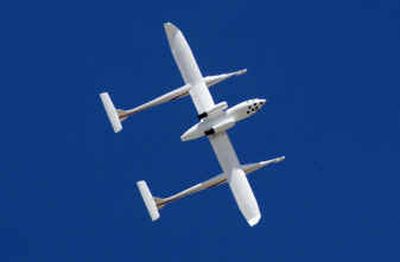Dreaming of space flights for everyone

WASHINGTON – Think of it as a badminton shuttlecock: Put a pilot in it, take it up in the air and fire it 62 miles into suborbital space at three times the speed of sound with the knowledge that as the spacecraft plummets back to Earth, it will be pointing in the right direction.
This precept underpins the aerodynamics of SpaceShipOne, a stubby rocket plane whose creators on Monday plan to put a human in space for the first time without government sponsorship or assistance.
“We are encouraging people to come and bring kids,” said engineer Burt Rutan, who built SpaceShipOne. “We fly to space directly over the crowd instead of going way down range, and it lands back in the same place like a small, light plane at a private airport.”
Rutan leads one of 27 teams from seven countries that are competing for the $10 million X Prize, to be given to the first private entrepreneur who can put three people into suborbital space and do it again with the same equipment within two weeks – and do it all by the end of this year.
The idea is to create a new tourist industry.
“For the last 30 years, people have thought that space flight is only for a select number of government employees,” said Peter Diamandis, chairman and president of the X Prize Foundation, the competition’s organizer. “We want to change that mind-set.”
The X Prize is modeled on the $25,000 Orteig Prize that Charles Lindbergh won for crossing the Atlantic nonstop in 1927. Practically overnight, the narrow public perception of the airplane as a weapon and a stunt device expanded to embrace air travel as something for everyone.